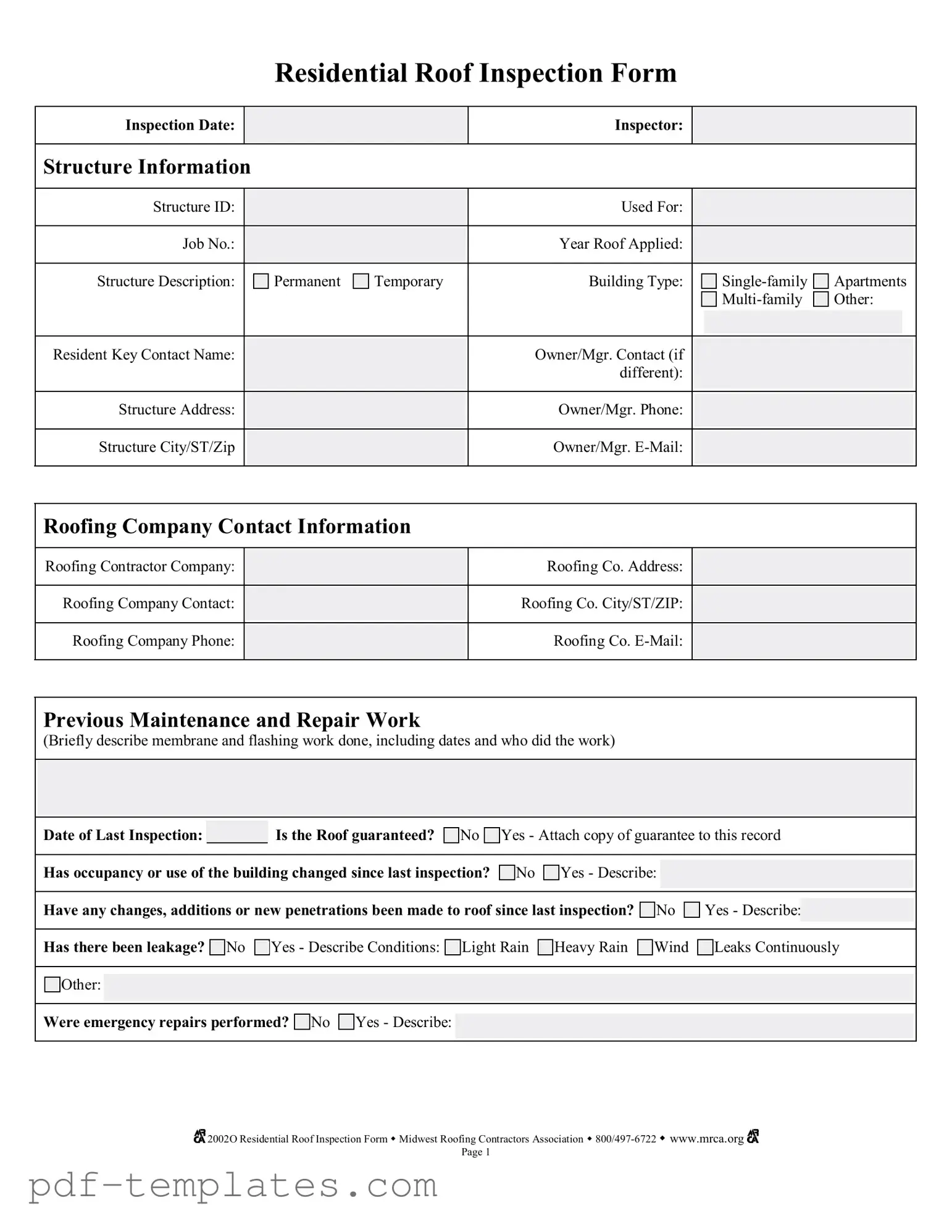The Roof Inspection form shares similarities with a Home Inspection Report. Both documents serve to evaluate the condition of a property, focusing on critical structural elements. A Home Inspection Report includes sections for assessing various aspects of the home, such as plumbing, electrical systems, and the roof. Like the Roof Inspection form, it documents findings, recommendations, and necessary repairs, providing homeowners with a comprehensive overview of their property’s condition.
Another comparable document is the Property Condition Assessment (PCA). This report is often used by commercial real estate professionals to evaluate the physical condition of a property. Similar to the Roof Inspection form, a PCA includes detailed observations about the roof, along with other structural components. Both documents aim to identify potential issues that could affect the property's value and safety, making them essential for informed decision-making.
The ADP Pay Stub form is essential for employees as it details their earnings and deductions for each pay period, providing clarity on compensation, withholding taxes, and financial information. If you need assistance with your pay stub, you can find helpful resources at pdftemplates.info/adp-pay-stub-form.
The Maintenance Log is another document that aligns closely with the Roof Inspection form. This log records all maintenance and repair activities performed on a property over time. Like the Roof Inspection form, it emphasizes the importance of tracking previous work and can help identify patterns of recurring issues. Both documents are vital for maintaining the integrity of the property and ensuring that necessary repairs are addressed in a timely manner.
The Warranty Inspection Report also shares common ground with the Roof Inspection form. This report typically assesses whether a roof is still under warranty and identifies any conditions that may void that warranty. Similar to the Roof Inspection form, it documents the roof's condition and outlines any necessary repairs or maintenance to keep the warranty valid. Both documents serve to protect the homeowner's investment and ensure compliance with warranty terms.
A Building Code Compliance Inspection is yet another document that parallels the Roof Inspection form. This inspection assesses whether a property meets local building codes and safety standards. Like the Roof Inspection form, it includes a thorough evaluation of structural components, including the roof. Both documents aim to ensure that properties are safe for occupancy and meet legal requirements, making them essential for property owners and managers.
Lastly, the Insurance Inspection Report is similar to the Roof Inspection form in that it evaluates the condition of a property for insurance purposes. This report often includes information about the roof's condition, age, and maintenance history. Just like the Roof Inspection form, it aims to identify potential risks that could affect insurance coverage and premiums. Both documents are crucial for homeowners to understand their insurance needs and ensure adequate protection for their property.
